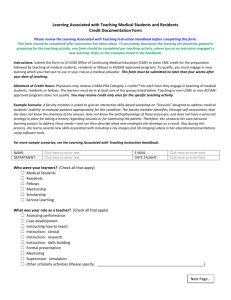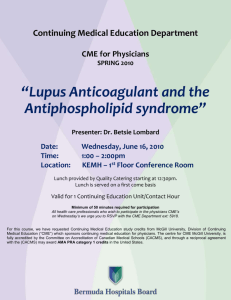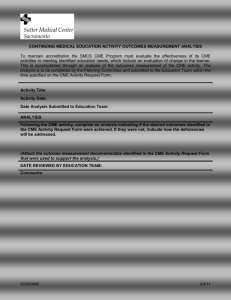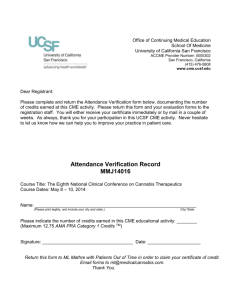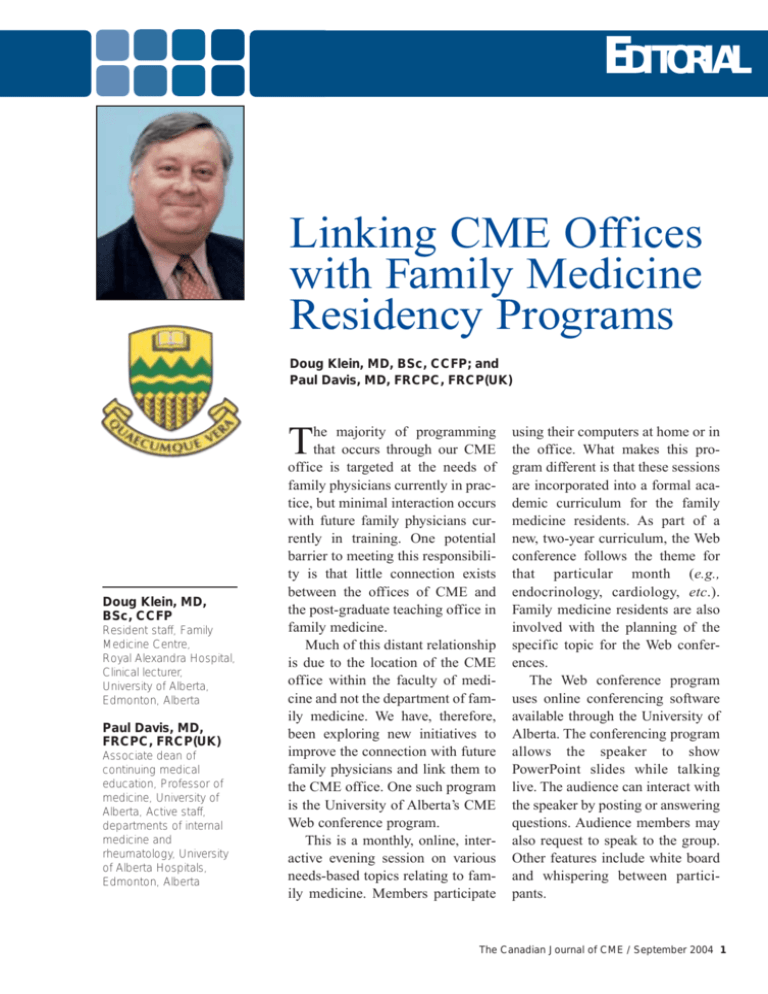
EDITORIAL
Linking CME Offices
with Family Medicine
Residency Programs
Doug Klein, MD, BSc, CCFP; and
Paul Davis, MD, FRCPC, FRCP(UK)
he majority of programming
that occurs through our CME
office is targeted at the needs of
family physicians currently in practice, but minimal interaction occurs
with future family physicians currently in training. One potential
barrier to meeting this responsibility is that little connection exists
between the offices of CME and
the post-graduate teaching office in
family medicine.
Much of this distant relationship
is due to the location of the CME
office within the faculty of medicine and not the department of family medicine. We have, therefore,
been exploring new initiatives to
improve the connection with future
family physicians and link them to
the CME office. One such program
is the University of Alberta’s CME
Web conference program.
This is a monthly, online, interactive evening session on various
needs-based topics relating to family medicine. Members participate
T
Doug Klein, MD,
BSc, CCFP
Resident staff, Family
Medicine Centre,
Royal Alexandra Hospital,
Clinical lecturer,
University of Alberta,
Edmonton, Alberta
Paul Davis, MD,
FRCPC, FRCP(UK)
Associate dean of
continuing medical
education, Professor of
medicine, University of
Alberta, Active staff,
departments of internal
medicine and
rheumatology, University
of Alberta Hospitals,
Edmonton, Alberta
using their computers at home or in
the office. What makes this program different is that these sessions
are incorporated into a formal academic curriculum for the family
medicine residents. As part of a
new, two-year curriculum, the Web
conference follows the theme for
that particular month (e.g.,
endocrinology, cardiology, etc.).
Family medicine residents are also
involved with the planning of the
specific topic for the Web conferences.
The Web conference program
uses online conferencing software
available through the University of
Alberta. The conferencing program
allows the speaker to show
PowerPoint slides while talking
live. The audience can interact with
the speaker by posting or answering
questions. Audience members may
also request to speak to the group.
Other features include white board
and whispering between participants.
The Canadian Journal of CME / September 2004 1
EDITORIAL
hat makes this
program
different is that
these sessions are
incorporated into
a formal academic
curriculum for
the family medicine
residents.
W
A major advantage of this type
of CME is that sessions are
archived and can be viewed by residents at a later date. This is especially important for residents who
may be on-call at the time of the
conference, but wish to listen to a
conference at an alternate time.
This program is still in its development stage, but is expected to be
expanded to involve both residents
and community physicians this
coming fall. Very positive feedback
has been received from the residents who participated in the pro-
gram. Most comments commonly
reflect the convenience of
accessibility from home and the
ability to view archived sessions at
a later date.
This type of programming will
hopefully strengthen the connection between the CME office, postgraduate teaching in family medicine, and family physicians already
practising. CME
Copyright © 2004 and published by STA Communications Inc., 955 boulevard St-Jean, Suite 306, Pointe Claire, QC H9R 5K3. Published 12 times per year. Subscription: $102.00
annually; single copy $8.50; $10.75 elsewhere. Canada Post — Canadian Publications Mail Sales Product Agreement No.: 40063348. Postage paid at St-Laurent, Quebec. All rights
reserved. None of the contents of this publication may be reproduced, stored in a retrieval system, or transmitted in any form or by any means (electronic, mechanical, photocopying,
recording or otherwise) without the prior written permission of the publisher. ISSN 0843-994X. Cover: University of Alberta.
2 The Canadian Journal of CME / September 2004




